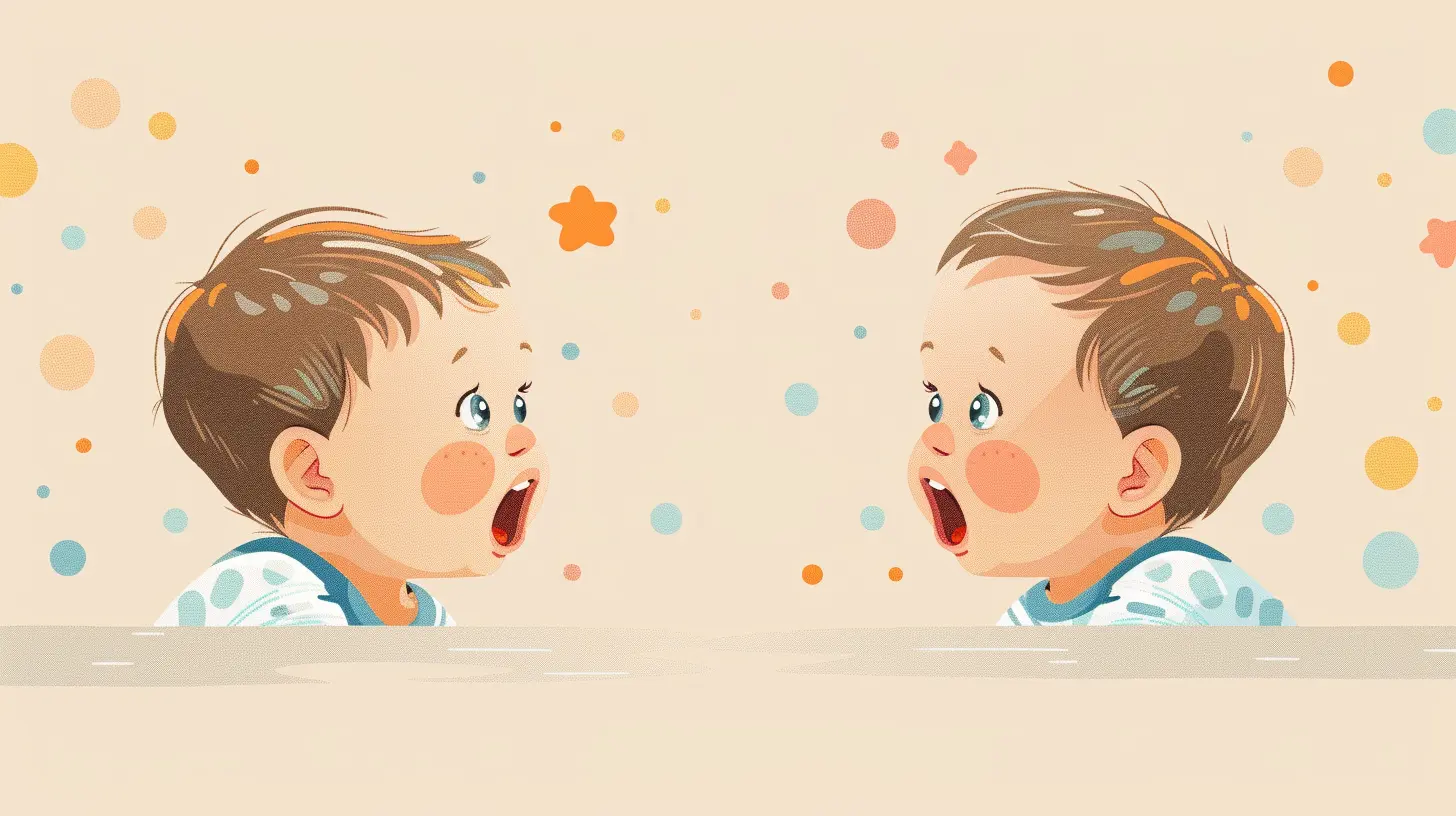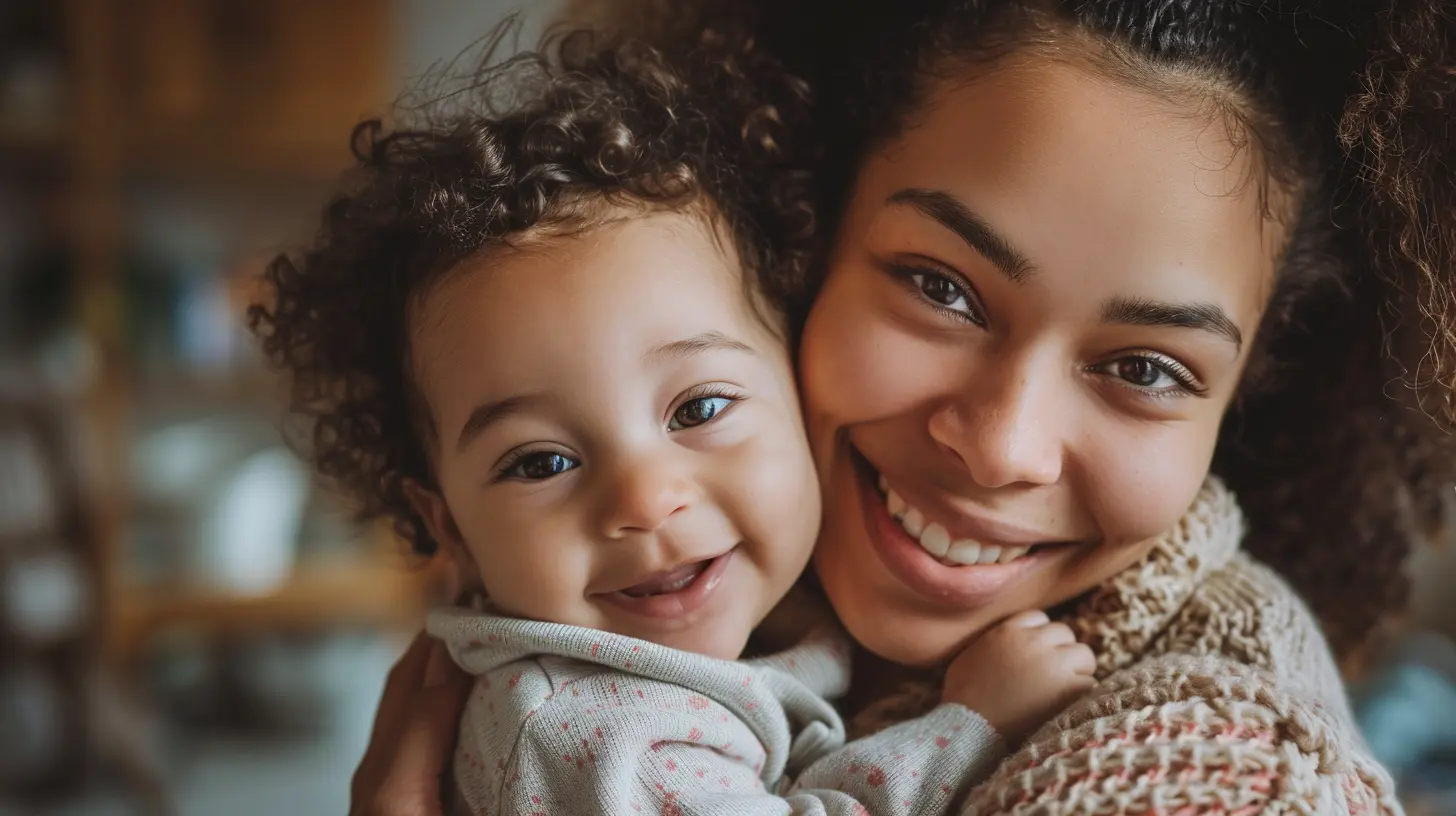The Developmental Benefits of Baby Mimicry: Why Babies Copy You
22 May 2025
Have you ever noticed your little one sticking out their tongue right after you do? Or maybe they try to clap their tiny hands when they see you clapping? It’s adorable, right? But beyond being cute, baby mimicry is a crucial part of their learning and development.
Babies are like tiny sponges, soaking up everything around them. One of their most powerful tools for learning is imitation. From facial expressions to speech patterns and even emotional responses, babies mimic what they see, hear, and feel. But why do they do this, and how does it benefit them? Let’s dive into the science and significance of baby mimicry! 
Why Do Babies Copy You?
Babies are born learners, and one of their strongest instincts is to observe and imitate. They do this naturally as a way to understand the world around them. But what exactly drives this behavior?1. Building Connections Through Bonding
From the moment your baby enters the world, they crave connection. Mimicry is one of the earliest forms of social bonding between a baby and their caregivers. When your baby mirrors your actions, they are engaging with you, strengthening their emotional connection.For example, when you smile at your baby and they smile back, it’s not just adorable—it’s their way of building trust and security. This back-and-forth interaction creates a foundation for emotional development and social confidence.
2. Learning How to Communicate
Before they can form words, babies rely on imitation to understand language and communication. Have you ever noticed your baby babbling right after you speak? That’s them practicing!When they copy your sounds, facial expressions, or even hand gestures, they’re developing the skills necessary for speech. This is why talking, singing, and making exaggerated expressions around your baby is so beneficial—it helps them grasp the basics of language and social interaction.
3. Understanding Emotions and Social Cues
Your baby is constantly watching how you react to situations. If you laugh, they might giggle too. If you look concerned, they might mimic your expression.This imitation helps them develop emotional intelligence. They learn to associate certain expressions with feelings, which aids them in understanding emotions—both their own and those of others. This skill becomes even more vital as they grow and start forming relationships with family members, peers, and caregivers. 
The Developmental Benefits of Baby Mimicry
So what exactly is your baby gaining from all this copying? As it turns out, quite a lot! Let’s break it down.1. Cognitive Development Boost
When babies imitate actions, they engage in a mental workout that strengthens their cognitive skills. This includes:- Problem-solving: Watching and repeating tasks helps them figure out how things work.
- Memory Development: Repeating actions helps information stick.
- Pattern Recognition: Babies start to recognize sequences that help them predict what comes next.
By mirroring you, they’re learning cause and effect—one of the fundamental building blocks of cognitive development.
2. Motor Skill Development
Ever noticed how quickly your baby starts trying to copy your claps, waves, or even walking movements? This is how they refine their motor skills.- Fine Motor Skills: Small movements like grasping a spoon or touching their nose improve through imitation.
- Gross Motor Skills: Bigger movements like crawling, standing, or walking are learned by copying those around them.
Every time you encourage them by demonstrating actions like waving bye-bye or stacking blocks, you’re helping them strengthen their movement abilities.
3. Faster Language Acquisition
Imitation plays a massive role in language development. Babies who frequently mimic sounds and words tend to pick up language faster. By repeating what they hear, they are forming crucial speech and auditory connections in their brains.Here’s how mimicry supports language learning:
- Babies pick up pronunciation by copying sounds.
- They begin to understand context by repeating words in different situations.
- They learn sentence structure by mimicking tone and rhythm.
So, the more you talk, sing, and interact expressively, the more you’re feeding their growing language skills!
4. Building Confidence and Independence
Mimicry isn’t just about learning—it’s also about building confidence. When your baby successfully imitates an action, they get a sense of accomplishment.Think about when they finally clap after watching you do it repeatedly. That proud little grin they flash? It’s because they realize, “I can do it too!” This self-confidence encourages them to keep exploring new skills and eventually try things on their own without needing constant guidance. 
How Can Parents Encourage Healthy Mimicry?
Now that we know how important mimicry is, how can we encourage it in a positive and enriching way? Here are some simple yet effective ways:1. Make Eye Contact and Interact Often
Engage with your baby face-to-face. Smile, make playful expressions, and talk to them frequently—even if they can’t fully respond yet. This strengthens their ability to mimic and connect with you emotionally.2. Use Exaggerated Expressions and Sounds
Babies love big, animated expressions, and it helps them understand emotions and sounds better. Try making different faces, changing your tone while speaking, or even making funny noises to see if they imitate you!3. Encourage Physical Imitation
Clap, wave, dance, or play peek-a-boo. These fun activities help babies strengthen their muscles and coordination while reinforcing mimicry.4. Talk and Read Aloud
The more language they hear, the better! Reading books, singing songs, and talking throughout the day (even narrating your actions) teaches them sounds, words, and sentence structure.5. Celebrate Their Efforts
When your baby mimics you successfully, cheer them on! A simple, “Yay! You did it!” or a big smile reinforces their confidence and encourages them to keep learning.
When Should Parents Be Concerned?
While baby mimicry is a natural part of development, there are certain signs parents should watch for:- Lack of Interest in Imitation: By around 6–12 months, babies should start trying to copy expressions and movements. If they don’t seem interested at all, it might be worth discussing with a pediatrician.
- Delayed Speech or Motor Skills: If your baby isn’t imitating sounds or movements by 12–18 months, it may indicate a developmental delay.
- Limited Social Responsiveness: Babies should respond to smiles, eye contact, and playful interactions. If they seem disengaged, it might be worth seeking professional guidance.
Of course, every baby develops at their own pace, but paying attention to these signs can help you support their growth early on.
Final Thoughts
Baby mimicry is more than just an adorable habit—it’s a powerful learning tool that shapes their cognitive, emotional, and social development. Every clap, smile, and babble they copy from you is building their brainpower and confidence.So, the next time your baby sticks out their tongue after you do, remember—you’re not just playing a silly game. You’re helping them grow, learn, and thrive in ways that will benefit them for a lifetime.
Cherish these little moments, engage with your baby often, and enjoy the beautiful learning journey together. After all, you’re their very first teacher, and they’re learning by watching you!
all images in this post were generated using AI tools
Category:
Infant DevelopmentAuthor:

Maya Underwood
Discussion
rate this article
3 comments
Elsinore McLaughlin
Such a helpful reminder! Baby mimicry truly fosters connection and learning.
June 5, 2025 at 3:47 PM

Maya Underwood
Thank you! I'm glad you found it helpful. Baby mimicry is indeed a powerful tool for bonding and learning!
Samuel Barron
Encourage baby mimicry; it enhances communication skills and strengthens parent-child bonding through play.
May 23, 2025 at 2:34 AM

Maya Underwood
Absolutely! Mimicry is a powerful tool for fostering communication and deepening connections between parents and their babies through interactive play.
Kimberly McMahan
What a fascinating exploration of baby mimicry! It's incredible how our little ones learn through imitation. I wonder how this natural behavior shapes their social skills and emotional development as they grow.
May 22, 2025 at 4:58 AM

Maya Underwood
Thank you! Baby mimicry indeed plays a crucial role in shaping social skills and emotional development by fostering connections and enhancing communication. It’s amazing how imitation lays the groundwork for future interactions!



